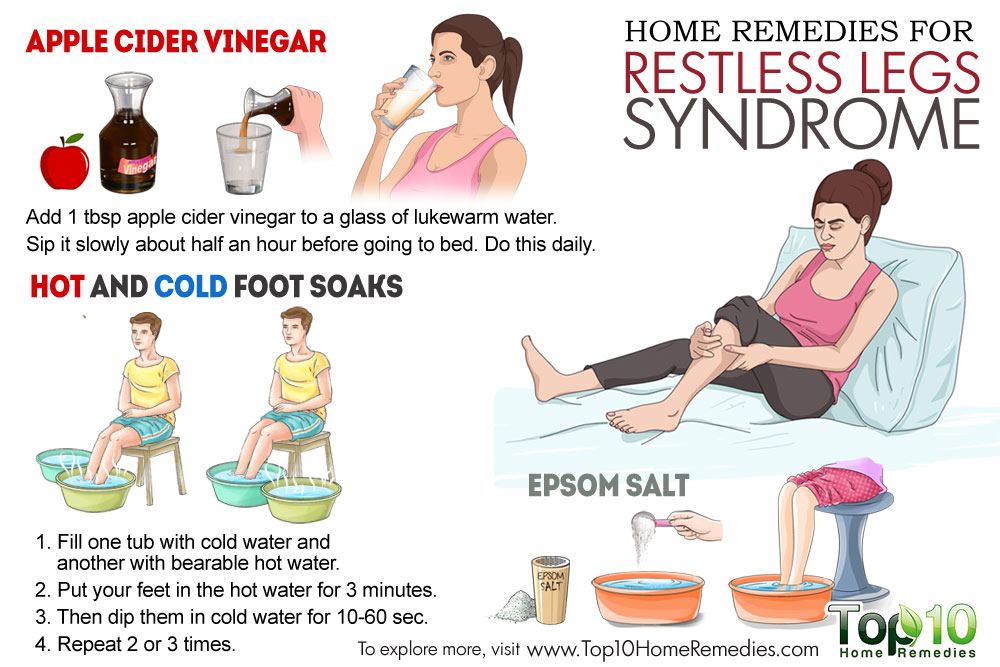Various treatments are available for restless legs syndrome. You can try a restless leg syndrome diet if you have experienced the symptoms. Eating leafy greens and spinach can help you feel better. Aside from eating these foods, you can also take Epsom salt baths. These are proven remedies to soothe restless legs. You will also notice a reduction in your symptoms after starting a restless leg syndrome diet.
Spinach
Studies show that a diet rich in foods that support the nervous system can help prevent and treat restless legs syndrome. A proper diet is vital for proper blood circulation, and a healthy balance of nutrients is essential to combat the symptoms of the disorder. However, some dietary changes may be necessary to control restless legs. For example, people with restless legs syndrome should limit caffeine, which stimulates nerves and worsens symptoms. While caffeine isn’t the culprit, it should be avoided altogether. Limiting caffeine to 400 mg per day – the equivalent of four cups of coffee – can be helpful.
Another reason to include spinach in your diet is its nutrient content. Spinach is an excellent source of folate and iron. In fact, spinach is one of the best plant-based sources of both nutrients. A hundred grams of raw spinach contain about 2.7 mg of iron, or 15% of your recommended daily allowance. Spinach also contains vitamin E, omega 3 fatty acids, and other nutrients that aid the immune system and alleviate restless leg syndrome symptoms.
A good diet should also include plenty of magnesium, folate, and whole-grain bread. The restless leg syndrome diet should also include foods high in iron, such as spinach. The iron helps regulate muscle contraction and nerve impulse conduction, which can help alleviate symptoms of restless legs syndrome. Iron fortified foods and red meat are also good choices, as they are rich in carnitine and folate, which aid the nervous system and prevent restless leg syndrome.
Spinach is one of the top 7 foods recommended for people with restless leg syndrome. This is one of the best ways to ease the symptoms of this condition. The diet should be varied and nutritious to avoid nausea and vomiting. For some, the restless leg syndrome diet may be the only way to find relief from the symptoms. For others, it may be a matter of focusing on reducing the number of hours of restlessness.
Leafy greens
If you are suffering from restless legs syndrome, you may be wondering whether eating more leafy greens is a good idea. You may not realize it, but the problem can be caused by a lack of certain nutrients. Not only can restless legs lead to insomnia, but they can also lead to other diseases. Eating a balanced diet is the key to controlling restless legs and ensuring you get enough sleep.
The first thing to consider when choosing a Restless Leg Syndrome Diet is what type of food is best for the condition. If your body is deprived of enough vitamins and minerals, you may experience restless legs syndrome. Leafy greens contain omega-3 fatty acids, which are essential for the immune system. It can also help to keep your digestion in check. The second thing to consider is how much of these foods are in your diet. While leafy greens may not be the main culprit, they can certainly help.
Low iron levels may also be a cause of restless legs syndrome, so eating plenty of spinach, seafood, and most beans will help reduce your symptoms. Red meat is also a common culprit, because it contains carnitine, which can cause restless legs. Folate and magnesium may also be helpful, and so should whole grains and nuts. Lastly, avoiding alcohol and caffeine can be beneficial for restless legs syndrome sufferers.
Another way to avoid restless legs is by eating more iron-rich foods. Eating a variety of leafy greens can help you increase your blood-iron levels, which can be beneficial in the long run. The best sources of iron are dark green leafy vegetables, beans, and iron-fortified foods. If you don’t have these foods, your doctor may recommend an iron supplement for you.
Epsom salt
While most people associate Epsom salt with baths, this mineral also has other benefits. It has been used for centuries to cure pain, spasms, and skin conditions. The mineral is not the same as table salt, but it is still helpful for treating restless legs. It is available in many stores, including health food stores and supermarkets. Epsom salt also helps with skin conditions, such as psoriasis. In addition to its beneficial properties, Epsom salt can also be used as a sanitizer for the skin.
Pregnant women with restless legs should consider getting more iron in their diets. Iron deficiency is a major cause of restless leg syndrome. It can be cured with the proper supplements and diet. Exercise can help relieve restless leg symptoms, too. Try taking a light walk every day. It will help your body absorb more iron. You should also take magnesium in moderation.
Exercise is another great way to get your circulation moving. Even if you cannot get exercise in, taking a warm bath can help relieve your restless leg syndrome symptoms. Exercise is an excellent way to reduce symptoms and promote a good night’s sleep. And remember, magnesium is one of the top 7 foods on the Restless Leg Syndrome Diet. The benefits of magnesium are many and they’re worth checking out!
When it comes to relaxation, there’s nothing better than soaking your legs in a warm bath with Epsom salt. Epsom salt soothes muscles and reduces the symptoms of RLS. Also, if your symptoms are worsening, try taking an Epsom salt bath to help relax your legs. Cold water therapy can also help relieve sore muscles. And when you’re finished, try to take a warm bath or take an Epsom salt bath.
Epsom salt baths
Taking an Epsom salt bath is an excellent way to improve your magnesium levels. Epsom salts have many benefits, including relaxing the muscles and preventing spasms. This type of bath can be a fantastic way to start your night. Taking a warm bath before bed will also help relax your muscles and set the stage for a good night’s rest. It is an excellent remedy for restless legs syndrome and has numerous benefits.
Epsom salt is one of the most common recommendations for restless legs. Take a bath with half a cup of Epsom salt. You can buy this type of salt from any drugstore. The magnesium sulfate in Epsom salt is a natural anti-inflammatory and muscle relaxant. The salt is broken down into magnesium, sulfur, and oxygen, which helps reduce symptoms of restless leg syndrome.
A regular routine is important for people with restless legs. Stretching your muscles, massage them, and reducing stress can all reduce the symptoms. You should also avoid drinking too much caffeine, sugar, or alcohol as these can trigger RLS symptoms. This is because caffeine is an energy-sucking substance. Cold water therapy may also be helpful, as it can improve circulation and reduce sore muscles.
Another treatment option is taking an Epsom salt bath every day. This remedy has been shown to alleviate symptoms of restless legs. Many women with restless legs suffer from iron deficiency. Iron is a vital mineral, especially for pregnant women. An iron supplement may be beneficial, but it may be hard for a woman to absorb. Therefore, an Epsom salt bath is an ideal solution for women with RLS.
Caffeine
In 2013, the RLS Foundation published an algorithm for the management of patients with restless legs syndrome (RLS). It was based on scientific evidence and expert opinion, and recommended eliminating caffeinated beverages. The RLS Foundation’s algorithm for treating RLS is based on an extensive literature review. Here are seven foods to cut back on. Caffeine is one of the top 7 foods on the Restless Leg Syndrome Diet.
Some studies show that caffeine is linked with an increase in RLS symptoms. However, many common foods still contain caffeine. Caffeine is not a complete culprit, but it is important to check ingredient labels for any sources of caffeine. The RLS Foundation offers expert advice on what to eat and drink. Caffeine and alcohol are two of the worst foods for people with RLS.
There are several reasons why caffeine may be detrimental to a patient’s restless legs. Caffeine is a stimulant that causes a person to feel awake and alert during the day, but if consumed in moderation, caffeine can help ease restless leg syndrome. Caffeine has also been linked to depression. Caffeine has been linked with restless leg syndrome and has a higher prevalence than any other drug. Caffeine is also linked to an increased risk of suicidal behavior and increased stress. Caffeine is one of the top 7 foods on the Restless Leg Syndrome Diet.
A sleep routine is another important part of the restless leg syndrome diet. A daily routine of stretches and massages helps relieve symptoms and keep you comfortable. Taking supplements of magnesium, iron, and B vitamins can help, but they may have unwanted side effects. Getting plenty of sleep is important for lowering symptoms. In addition to these lifestyle changes, there are other ways to help relieve RLS. Massage therapy is a great way to counter-sense the symptoms.





